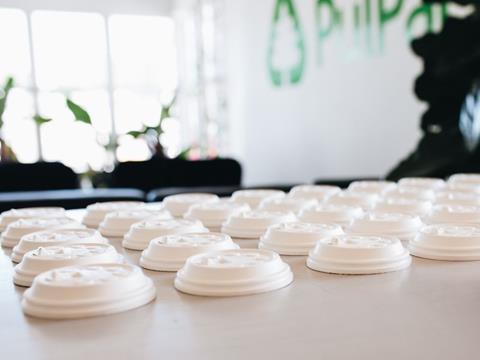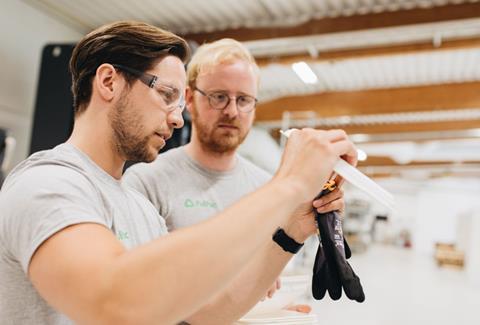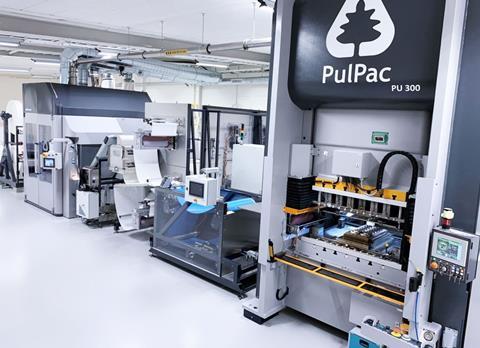
In the latest of our Sustainability Awards finalist interviews, PulPac talks us through their patented and market ready manufacturing technology for single-use packaging based on fibre moulding.
Congratulations on being selected by the international judging panel as a Sustainability Awards 2021 finalist! Could you please introduce your successful entry and what’s innovative about it?
Thank you! Our entry is not the average or tangible one and therefore we are extra happy that the judges selected us as a finalist. Dry Molded Fiber is not a product or material, it’s a patented and market ready manufacturing technology that can be used to produce almost any type of single-use packaging. The dry process makes it up to ten times faster than conventional fibre moulding and it doesn’t waste valuable water resources. It saves energy and gives up to 90% lower CO2 emissions at the same or lower cost than plastic. We work together with the industry and offer our technology on a licensing basis to plastics and fibre converters that want to join our mission to replace single-use plastics at scale.
What are the environmental challenges in packaging that your entry addresses, and what impact do you hope it will make?
Sustainability is a major business driver. People everywhere are asking for new solutions - for packaging and single-use products that just make good sense. But margins for commodity products are narrow and there’s a cost challenge to sustainability. Finding a true sustainable packaging solution – that is also commercially feasible and globally scalable is key to bring about change. Dry Molded Fiber enables low-cost, high-performance fiber-based packaging that is good for your business, your customers, and the world we share. Working together with the industry, we aim to replace as much single-use plastics as possible. And that fast. By 2025 our goal is to have replaced 1.000.000 tons of single-use plastics.

I’d like to ask you about the broader picture beyond your successful entry. ‘Sustainability’ in packaging is multi-dimensional – both in terms of objectives and challenges. Could you comment on the most important roadblocks you identify from your position in the value chain, and the kinds of solutions you would like to see addressing them (e.g. areas of technological innovation, collaboration, regulation)?
To lead the race for sustainable packaging the industry needs to collaborate and embrace a variety of different solutions – solutions that are truly sustainable. We all need to be open-minded to new solutions and the industry must be willing to support and invest in them. We must stop seeing packaging through the “plastic lens”. Single-use packaging must be made for its purpose, not “overqualified”, as plastic is. Legislators must also envision new technologies or solutions to not unwittingly hinder them, when aiming to enforce sustainability.

A challenge when accelerating and globally scaling a breakthrough technology like Dry Molded Fiber is setting up the supply chain at a fast enough pace. An eco-system of Dry Molded Fiver expertise and presence is required globally to replace single-use plastics at scale. We have the technology, the IP, the know-how. We have brand owners that are more than eager to shift to Dry Molded Fiber - and converters in the starting block. With supply chain in place, the Dry Molded Fiber avalanche can start and our technology will contribute to a world where single-use packaging is designed for its purpose, not to last for a thousand years.
















